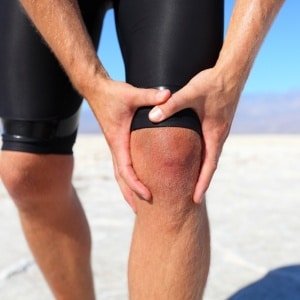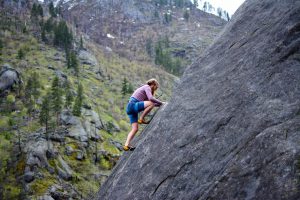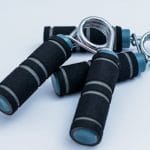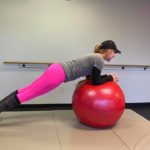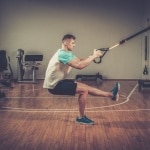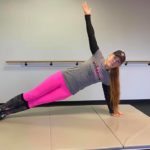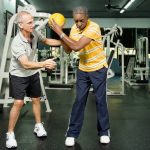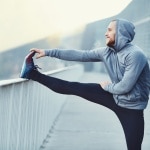 April 2023
April 2023
Walk – and Run – Smarter, Not Harder for Knee Health
Several years ago, research started demonstrating that gait changes might reduce knee loads, especially for runners. Some of this was prompted by studies on barefoot or minimalist-shoe running. We’ve discussed these issues here, here, here, and here. Those studies demonstrated that knee loads were reduced as pace was maintained with shorter, quicker strides. Researchers continued reporting on the benefits of minimalist shoes as running coaches started pushing for faster cadences of shorter strides, such as the POSE method.
A recent publication (MSSE Apr. 2023) adds to this firehose of knee-safe running. Patellofemoral osteoarthritis (PFOA) is one of the more intractable forms of OA of the knee, as we’ve discussed in previous posts, here and here. Whereas most patients suffer arthritis of the tibiofemoral joint – where the two large bones that make up the knee meet – PFOA is wear and tear of the cartilage on the back side of the patella and anterior part of the lower femur. Around 50% of knee OA patients suffer from this kind which is more difficult to treat and less amenable to surgical procedures that might prevent or delay a total knee replacement.
Here, 48 PFOA patients walked at a fixed gait speed in 3 conditions: preferred cadence, +10% increased- and -10% decreased cadences. Patellofemoral loads were estimated based on calculations of knee flexion forces.
Increased cadence – shorter, quicker steps – reduced biomechanical loading of the knee whereas decreased cadence – with longer, slower steps but at the same fixed speed – increased knee flexion impulse and moment.
The take-home message is that walkers and runners with PFOA, or even OA of the tibiofemoral joint, may be able to continue their activities by shortening their strides, taking more steps to keep their customary pace.
Is Wearing a Face Mask While Exercising a Travesty?
To mask or not to mask? That was the question. Regardless of your beliefs about face masks (FM), one issue that arose during the high point of the pandemic was if or how to exercise while wearing one. A Canadian study had 16 healthy adults perform an incremental cycling test 3 times with at least 48 hours between tests – baseline, with, and without a surgical FM.
Dyspnea (breathlessness) intensity and unpleasantness were assessed during the exercise and a post-exercise Multidimensional Dyspnea Profile was administered. The latter assessed the level of discomfort and breathing effort during the last 30 seconds of the test. Invasive diaphragmatic muscle action and esophageal pressures were measured to “estimate neural respiratory drive and respiratory muscle effort.” Thus, subjective and objective measures of how the FM impacted exercise performance could be compared.
The effect of a FM was notable: reduced exercise duration in 11/16 yet improved duration in 3; significant reduction in mean peak work rate; insignificant reduction in max heart rate and an insignificant increase in breaths/minute. On the other hand, the subjective experiences were as one might expect: more difficult ‘getting in air’, especially at peak work load with some complaining it was also harder to ‘get enough air out’.
Interestingly, objective measures showed greater diaphragm effort at sub-maximal but not at max loads. Some of these measures did not correspond to subjective experiences of dyspnea. “Aerobic capacity does not seem to play a role in mask-induced dyspnea.”
All of which all means that FM are uncomfortable but won’t severely alter your exercise capabilities.
MSSE Mar. 2023
Tid Bits
Running shoes remain a source of scientific concern ever since Nike popularized them in the 70s. A Feb. 2023 JOSPT study reports on a cohort of 372 runners randomized to wear either a standard neutral or motion-control shoe for 6 months to see if there was a difference in pronation-related injury rates. While the motion-control shoe seemed to reduce the risk of pronation-related injuries, they “did not influence the risk of other running-related injuries.”
Why do those in pain not meet physical activity (PA) standards? An analysis of data collected from the National Health Interview Survey from 2020, which included over 31,000 adults. Around 39% reported pain on some days, 9% on most days, and 15% on all days. As expected, the odds of engaging in PA decreased as the frequency and intensity of pain increased, compared to days of no pain. While this is a big Duh!, the study also determined that “individuals engaging in PA …[demonstrated] two times lower odds of reporting pain when compared with those not meeting the PA guidelines. MSSE Mar. 2023
As any bi- or triathlete knows, getting off the bike and starting the run is one of the most difficult transitions to make. Yet research hasn’t been done that answers the ‘why’. A French study compared the cost of locomotion (CL) of running and cycling during a 3-hour bout of prolonged high-intensity effort. CL was measured as “the rate of energy consumed per unit of time exercising at a given intensity.” The two work bouts were equilibrated in order to make a valid comparison which has not been done in other studies. They found that cycling CL is higher than that of running. This is most likely due to greater neuromuscular fatigue and not substrate (e.g. fat, glycogen) depletion. This might explain why it’s so dang hard to run after riding a bike for 112 miles! MSSE Mar. 2023

